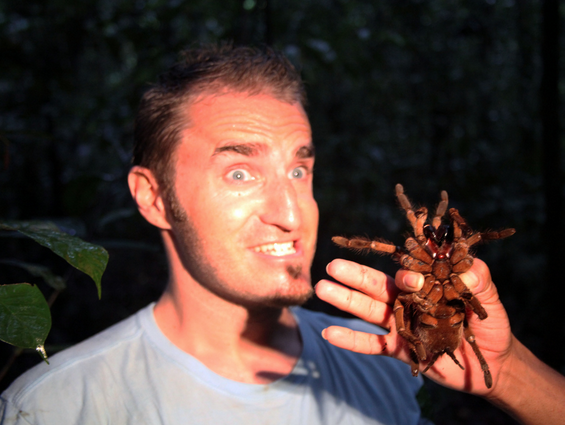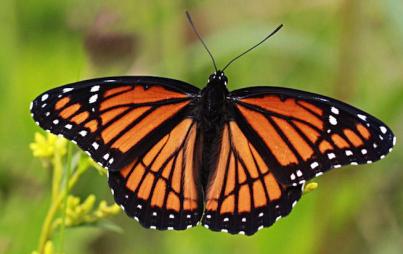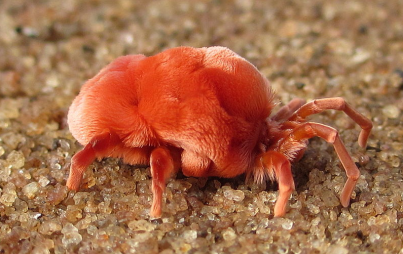
Flickr.com
Everybody suffers at the hands of different phobias; for some, a private hell is clowns, while others wince and whimper at the thought of sharks, dentists or deep water.
But I think we can all agree that a puppy-sized spider is pretty much a nightmare. Especially accidentally tripping over one in the South American jungle at dusk.
By now, you might have heard about Harvard entomologist and photographer Piotr Naskrecki, who recently strumbled upon a Goliath birdeater (Theraphosa blondi), considered to be the largest spider in world by mass. (Incidentally, in terms of the leg span, the giant huntsman spider has it beat, but I digress.)
A Goliath spider can be a foot wide and weigh about 170 grams, which, Naskrecki says, is about the weight of a puppy.
If that wasn't terrifying enough, let's talk cannibalism, fangs, hissing and venom.
First of, females can lay up too 200 eggs in one sitting, which in turn, become spiderlings in just two months. Interestingly enough, the Goliath spider kingdom is a bit of a matriarchy. Females mature in three to six years and can live up to the ripe old age of 25; males on the other hand only live to six years old, and die shortly after mating . . . that is if they're not eaten during the boot-knocking itself. Cannibalism is fairly common among the goliaths; scientists place mating death as high as 50%.
Some theorize that once a male has mated, he's done his biological part and manifested his destiny; he's unlikely to mate again. As he's already passed along his genes, his evolutionary benefit is increased if he not-so-indirectly contributes nutrition to the pending eggs. Those males that (possibly) choose not to mate for fear of being eaten will not pass along their precious love-juice.
Back The Fuck Off
If a Goliath is threatened, it will attempt a few different kinds of attacks including stridulation—a hissing sound created by rubbing their setaie (hair-like bristles) on their pedipalps (somewhere between mandibles and antennae) and legs.
You can hear it in this video:
If you indeed watched the above footage, you probably also noticed that the Goliath rears up. What's it up to exactly, besides trying to sink its fangs into you? Just releasing a cloud of urticating hairs that are basically like airborne nettles. Naskrecki got a first-hand glimpse of the phenomenon:
"Every time I got too close to the birdeater it would do three things. First, the spider would start rubbing its hind legs against the hairy abdomen. 'Oh, how cute!,' I thought when I first saw this adorable behavior, until a cloud of urticating hair hit my eyeballs, and made me itch and cry for several days. If that wasn’t enough, the arachnid would rear its front legs and open its enormous fangs, capable of puncturing a mouse’s skull, and tried to jab me with the pointy implements."
Let's see. Here's the good news.
1. Goliaths don't have any particularly insidious hunting techniques like webs or nimble leaping. Instead they sneak around, sink their teeth into someone unsuspecting and paralyze them. Instead of using teeth to tear or chew their food they regurgitate digestive juices onto their prey so they can drink everything (and everyone) like soup once the victim has been liquefied.
2. You can (maybe) hear these suckers coming. "[Goliath's] feet have hardened tips and claws that produce a very distinct, clicking sound, not unlike that of a horse's hooves hitting the ground," says Naskrecki.
So at least you know when to run?






